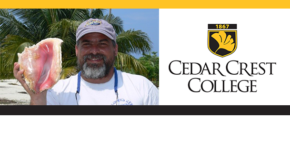 Microplastics have become a big problem.
Microplastics have become a big problem.
John A. Cigliano, professor of biology and director of environmental conservation at Cedar Crest College, explores how they move through the ecosystem.
John A. Cigliano, Ph.D., is a professor of biology and director of environmental conservation at Cedar Crest College in Allentown, Pennsylvania. He also serves as an Earthwatch Institute principal investigator and as adjunct research faculty at the Schoodic Institute at Acadia National Park in Maine.
Cigliano, who earned his Ph.D. in Biology from Boston University and his B.S. in Biology and Geology from the University of Rochester, collaborates with citizen scientists in his work studying both the effects of ocean acidification and warming and of microplastics on temperate rocky-intertidal organisms and communities. He is the Past President of the Marine Section, the President of the Participatory and Citizen Science Working Group, both of the Society for Conservation Biology, and a founding member of the Citizen Science Association.
The Cedar Crest College professor also served as editor of a recently published book Citizen Science for Coastal and Marine Conservation which takes a deep look at the need for and practice of marine and coastal citizen science for conservation. “It’s the first book to provide much-needed guidance and case studies from marine and coastal conservation,” according to Cigliano.
Professor Cigliano serves on the organizing committee for the International Congress for Conservation Biology (ICCB), the global conference for the Society for Conservation Biology, to be held July 23-27 in Kigali, Rwanda. The event will be the largest international congress for addressing conservation challenges and presenting the latest research in conservation science and practice.
Microplastics
The most basic question that my research explores is “How much microplastics are out there?” I’m looking both in the ocean, not just in the water column, but also in marine organisms. Are they being transferred through the marine food web? Do they move from filter feeders to the carnivores that eat them? Then, to those that that eat them and so on, moving up the food chain?
One indicator that this is happening is the fact that, whenever we look in organisms for microplastics, we find them.
We find them at the bottom of the food chain, the middle of the food chain, and the top of the food chain. And, there are really only two ways that marine organisms are going to take in microplastics. Either directly from the water or from eating organisms that already have the microplastics in them.
For filter feeders, like clams and mussels that filter sea water, the path is clear how microplastics can get into them. But when you go above the filter feeders, when you start getting into the carnivores, the predators, large fish and even sea mammals, we’re finding microplastics in their gut and in other parts of their bodies. Though they certainly take in water, it is less likely that they’re getting it directly from seawater. They are most likely be getting most of the microplastics from their prey.
Ultimately, the goal of my research is to better understand where microplastics are in the ocean, how they move through the food chain and how they affect marine ecosystems. Of course, there are also concerns about how this might affect human health since we find microplastics in organisms that we eat. Unfortunately, it is unlikely we will be able to remove much of the microplastics from seawater but we can keep the problem from getting worse by reducing the amount that we keep adding into the environment.


Comments
One response to “John A. Cigliano, Cedar Crest College – Microplastics”